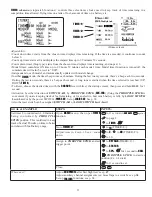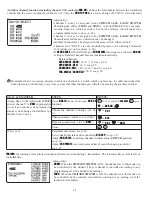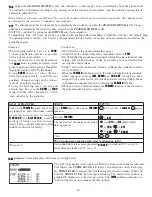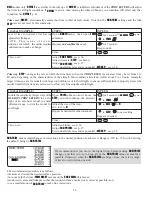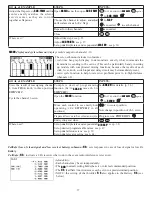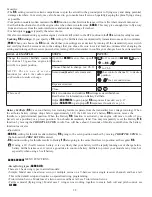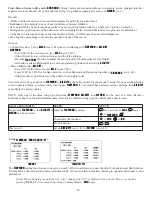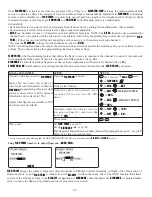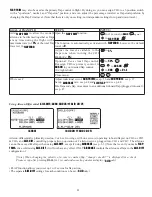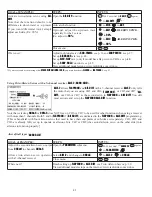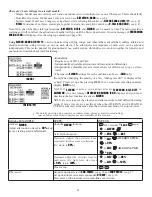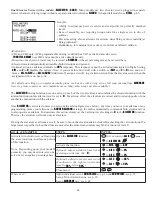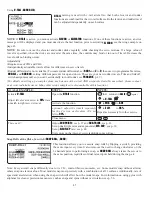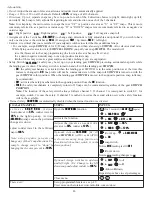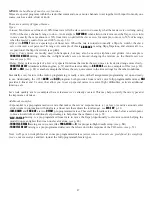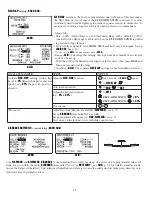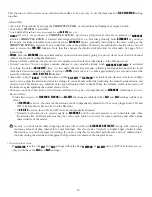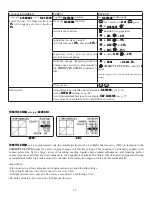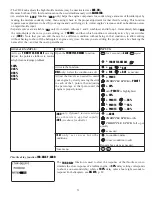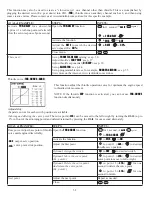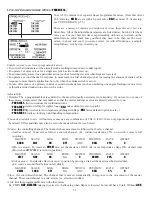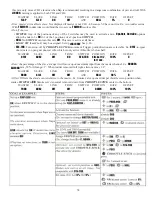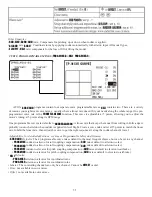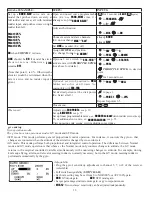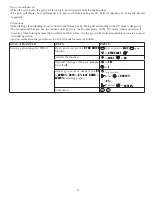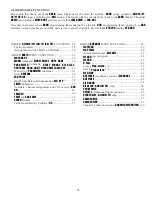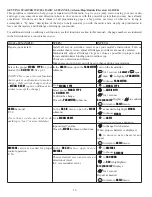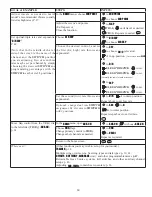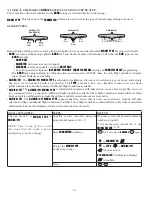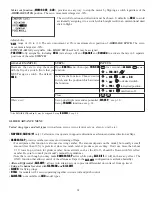
47
MIXES:
the backbone of nearly every function
Mixes are special programs within the radio that command one or more channels to act together with input from only one
source, such as a stick, slider or knob.
There are a variety of types of mixes.
Types:
•
Linear:
Most mixes are linear. A 100% linear mix tells the slave servo to do exactly what the master servo is doing, using
100% of the slave channel’s range to do so. An example is
FLAPERON
ZKHQDLOHURQVWLFNLVPRYHGWKHÀDSVHUYRLVWROG
to move exactly the same amount. A 50% linear mix would tell the slave servo, for example, to move to 50% of its range
when the master’s control is moved 100%. (see p. 39.)
•
Offset:
An
OFFSET
PL[LVDVSHFLDOW\SHRIOLQHDUPL[:KHQWKHPL[LVWXUQHGRQXVXDOO\DÀLSRIDVZLWFKWKHVODYH
servo is moved a set percent of its range. An example of this is
AIRBRAKE
PRYLQJÀDSVÀDSHURQVDQGHOHYDWRUDOOWRD
VHWSRVLWLRQDWWKHÀLSRIDVZLWFKVHHS
•
Curve:
Curve mixes are mostly used in helicopters, but may also be used in airplanes and gliders. An example is
THROTTLE-NEEDLE
mixing, where the in-flight needle’s servo is moved, changing the mixture, as the throttle servo is
moved. (see p. 50.)
• Delay: Delay mixes are part of a few very special functions that make the servo move to its desired range more slowly.
THROTTLE DELAY
(simulates turbine engines, p. 51) and the elevator delay in
AIRBRAKE
are two examples of this (see p. 48).
DELAY
in
HELI
(see p. 82) is another example that slows the servo movement to the trim settings for the other conditions.
(VVHQWLDOO\HYHU\IHDWXUHLQWKHUDGLR¶VSURJUDPPLQJLVUHDOO\DPL[ZLWKDOODVVLJQPHQWVSURJUDPPLQJVHWXSDQGUHDG\
to use. Additionally, the
AT10
ACRO
and
GLID
programs both provide 4 linear and 4 curve fully-programmable mixes (
HELI
provides 4 linear and 2 curve) that allow you to set up special mixes to resolve flight difficulties, activate additional
functions, etc.
Let’s look quickly at a few examples that are features we’ve already covered. This may help to clarify the mix types and
the importance of mixes.
Additional examples:
• Exponential is a preprogrammed curve mix that makes the servos’ response more (+) or less (-) sensitive around center
stick (works in conjunction with dual rate, a linear mix that adjusts the total range). see
D/R
,
EXP
, p. 30.
•
IDLE-DOWN
and
THR-CUT
are two
OFFSET
pre-programmed mixes. These tell the throttle servo, when below a certain point,
to move toward idle an additional set percentage to help close the carburetor. see p. 28.
•
ELEV-TO-FLAP
PL[LQJ LV D SUHSURJUDPPHG OLQHDU PL[ WR PRYH WKH ÀDSV SURSRUWLRQDOO\ WR HOHYDWRU FRQWURO KHOSLQJ WKH
model loop even tighter than it can on elevator alone. (see p. 48.)
•
THROTTLE-NEEDLE
mixing is a curve mix (like
PROG.MIX 5
to
8
IRUSURSHULQÀLJKWQHHGOHVHWXSVHHS
•
THROTTLE DELAY
mixing is a pre-programmed delay mix that slows down the response of the CH3 servo. (see p. 51.)
Next, we'll get an in-depth look at some pre-programmed mixes (
PL[HV ZKRVH FKDQQHOV DUH SUHGH¿QHGIRU
) we’ve not covered yet, and last, look at the fully-programmable mix types.
49.)
50.)
simplicity

